Deposit super cepat di situs BIRUTOTO mudah dan praktis hanya dengan satu kali klik langsung masuk 1 detik saja. Anda bisa menggunakan semua e-wallet atau mobile banking yang mensupport aplikasi scan barcode QRIS pasti aman dan terpercaya.
Keuntungan bermain bersama birutoto
Keuntungan bermain bersama kami adalah fitur yang sangat mudah dimainkan promonya banyak dan bonusnya super besar. Bisa bermain di permainan apa saja seperti slot, togel maupun parlay. Segera bergabung bersama kami untuk merasakan sensasi kemenangan besar














 Promosi
Promosi
 Login
Login
 Daftar
Daftar
 Link
Link
 Live Chat
Live Chat